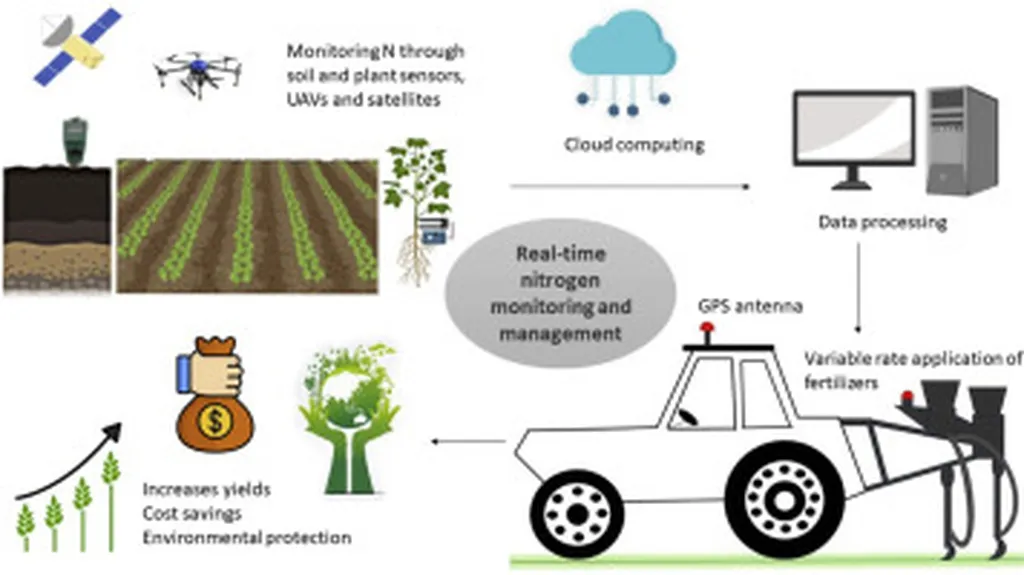In the quest to optimize agricultural productivity and sustainability, researchers are turning to advanced technologies to fine-tune nitrogen (N) fertilization strategies. A recent study published in *Akıllı Tarım Teknolojileri* (Smart Agricultural Technology) by Cihan Karaca of Akdeniz University’s Department of Agricultural Structures and Irrigation sheds light on the potential of proximal reflectance sensing to assess leaf nitrogen content and estimate crop yield in vegetable crops. This research could have significant implications for the agricultural sector, particularly in enhancing precision farming techniques.
Proximal reflectance sensing offers a non-destructive method for monitoring crop nitrogen status using vegetation indices derived from different spectral bands. However, the challenge lies in creating models that are applicable across various cultivars within the same species. Karaca’s study aimed to evaluate the performance of several vegetation indices focused on red, green, and red edge bands for assessing leaf nitrogen content and estimating crop yield in sweet pepper and muskmelon cultivars.
The research collected data across four phenological stages: vegetative, flowering, early fruit growth, and harvest stages. The findings revealed that the performance of vegetation indices to estimate leaf nitrogen content was relatively low during the vegetative and flowering stages but improved significantly during the early fruit growth and harvest stages. Notably, the Normalized Difference Vegetation Index (NDVI) and Green Normalized Difference Vegetation Index (GNDVI) exhibited superior estimation performance during the mid-development stages.
“Phenological stage-specific calibration models are crucial for improving estimation accuracy,” Karaca emphasized. “Integrating data from multiple cultivars may slightly reduce model performance compared to single-cultivar studies, but comprehensive studies including several cultivars of each species are recommended to enhance the performance of species-specific estimation models.”
The study demonstrated that NDVI and GNDVI provided the most accurate assessment of leaf nitrogen and estimation of crop yield among the various vegetation indices examined. This research contributes to the development of across-cultivar models for different phenological stages for each species, paving the way for versatile, cultivar-independent models that will aid in optimal crop nitrogen fertilization.
The implications of this research are far-reaching. By improving the accuracy of nitrogen content assessment and yield estimation, farmers can optimize fertilization strategies, leading to increased agricultural productivity and sustainability. This technology can also reduce the environmental impact of excessive nitrogen use, contributing to more sustainable farming practices.
As the agricultural sector continues to evolve, the integration of proximal reflectance sensing and advanced data analysis techniques will play a pivotal role in shaping the future of precision farming. Karaca’s research highlights the importance of tailored models that consider the unique characteristics of different cultivars and phenological stages, ultimately driving innovation in the field of agritech.
In an era where precision and sustainability are paramount, this study offers valuable insights into the potential of proximal reflectance sensing to revolutionize nitrogen management in vegetable crops. As the agricultural industry continues to embrace technological advancements, the findings from this research will undoubtedly contribute to more efficient and environmentally friendly farming practices.

